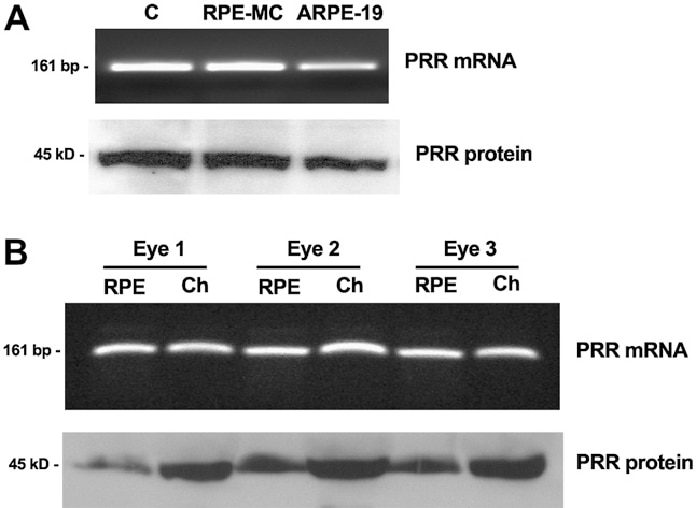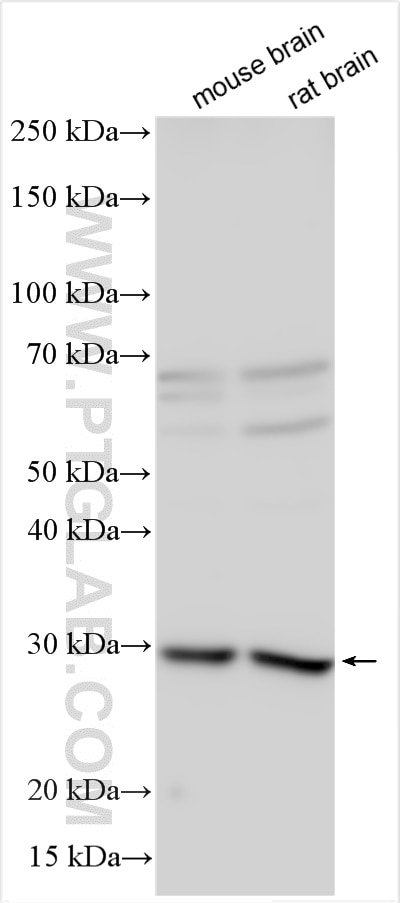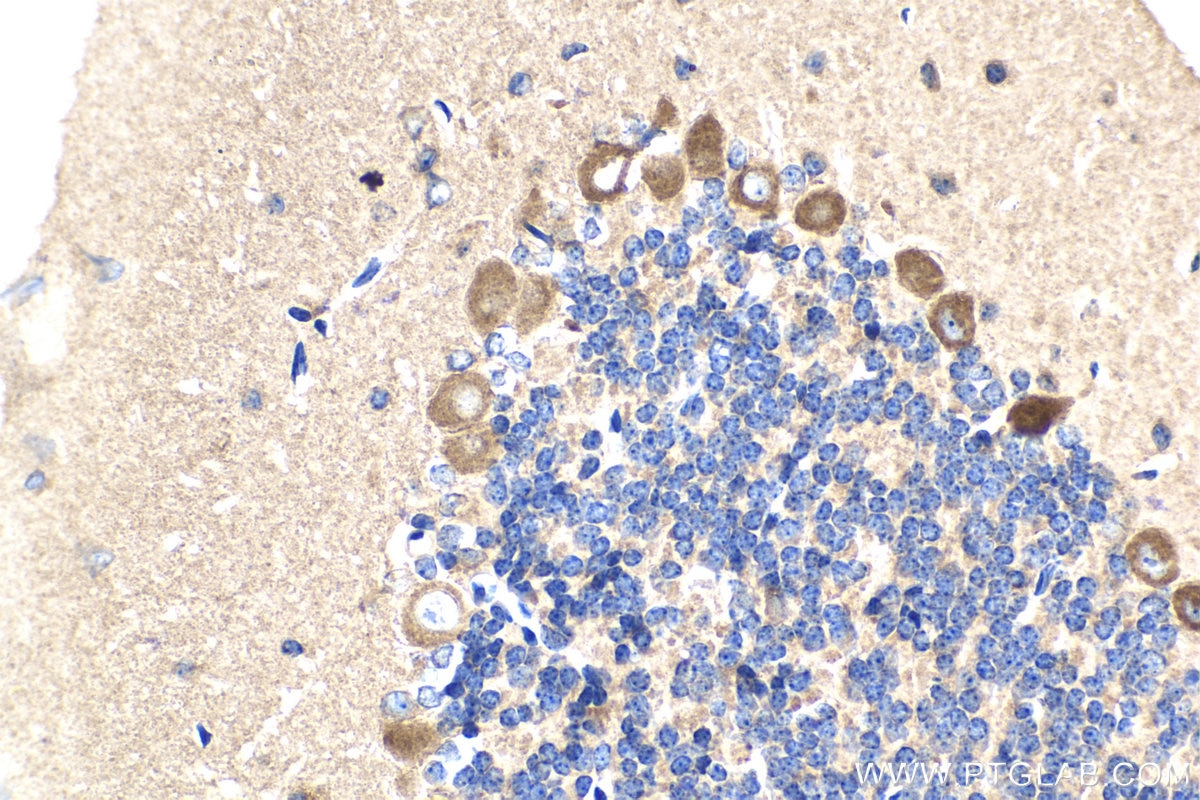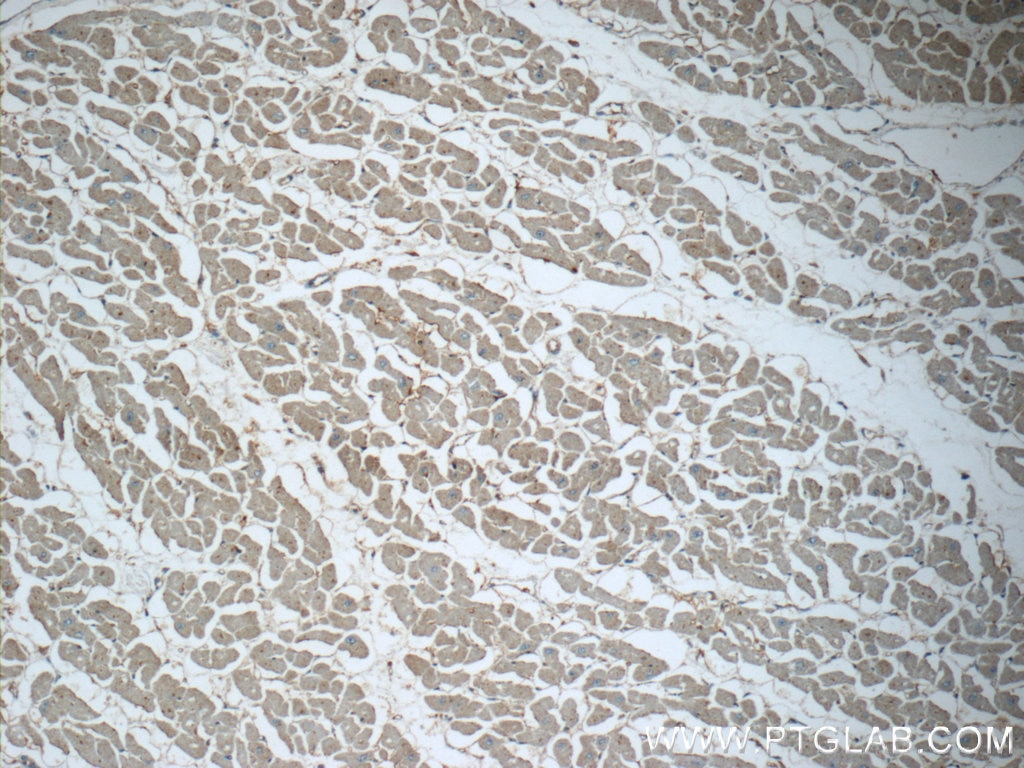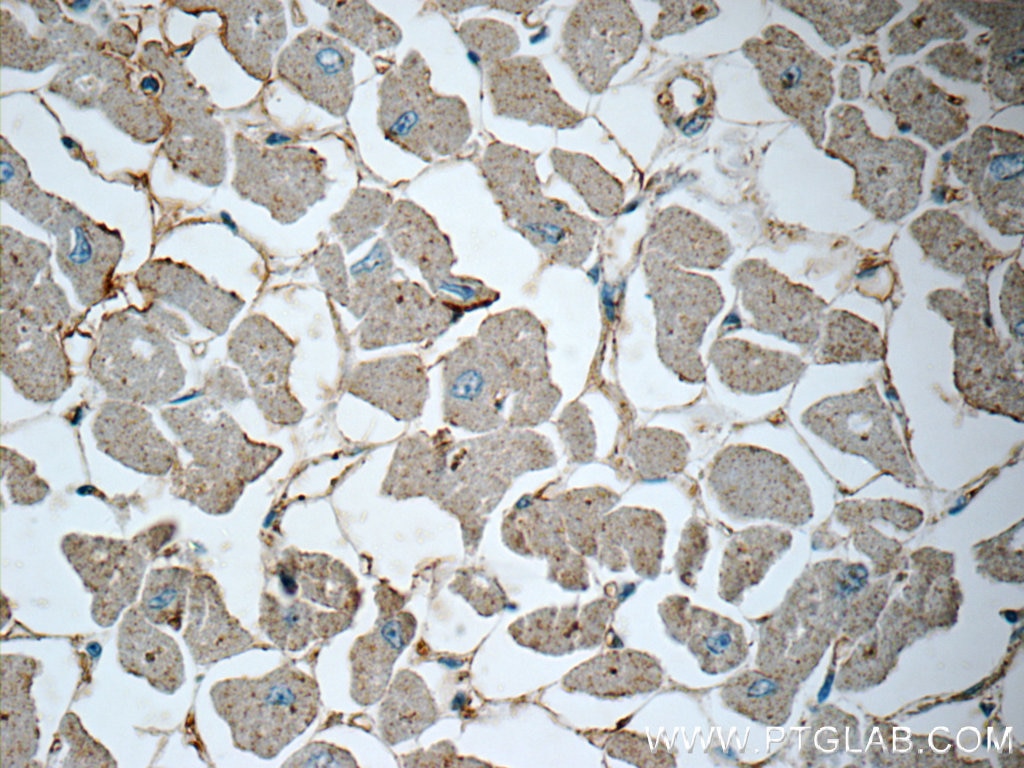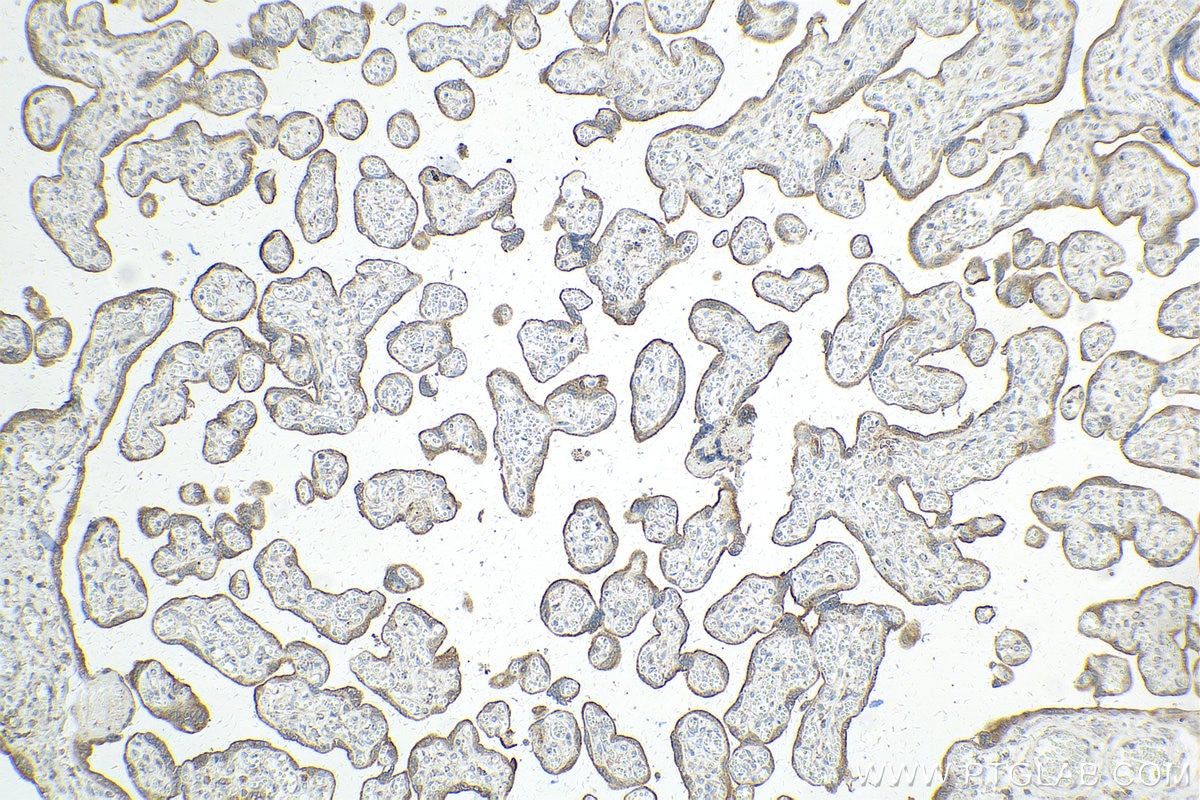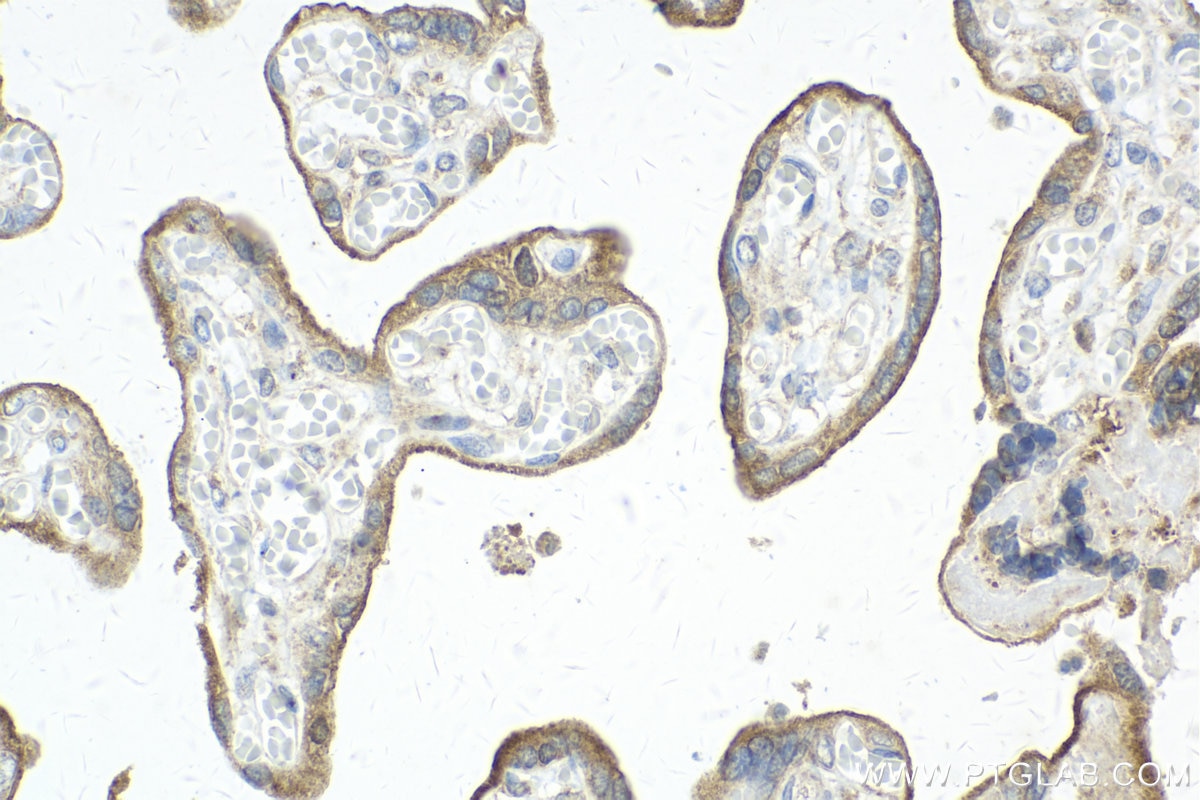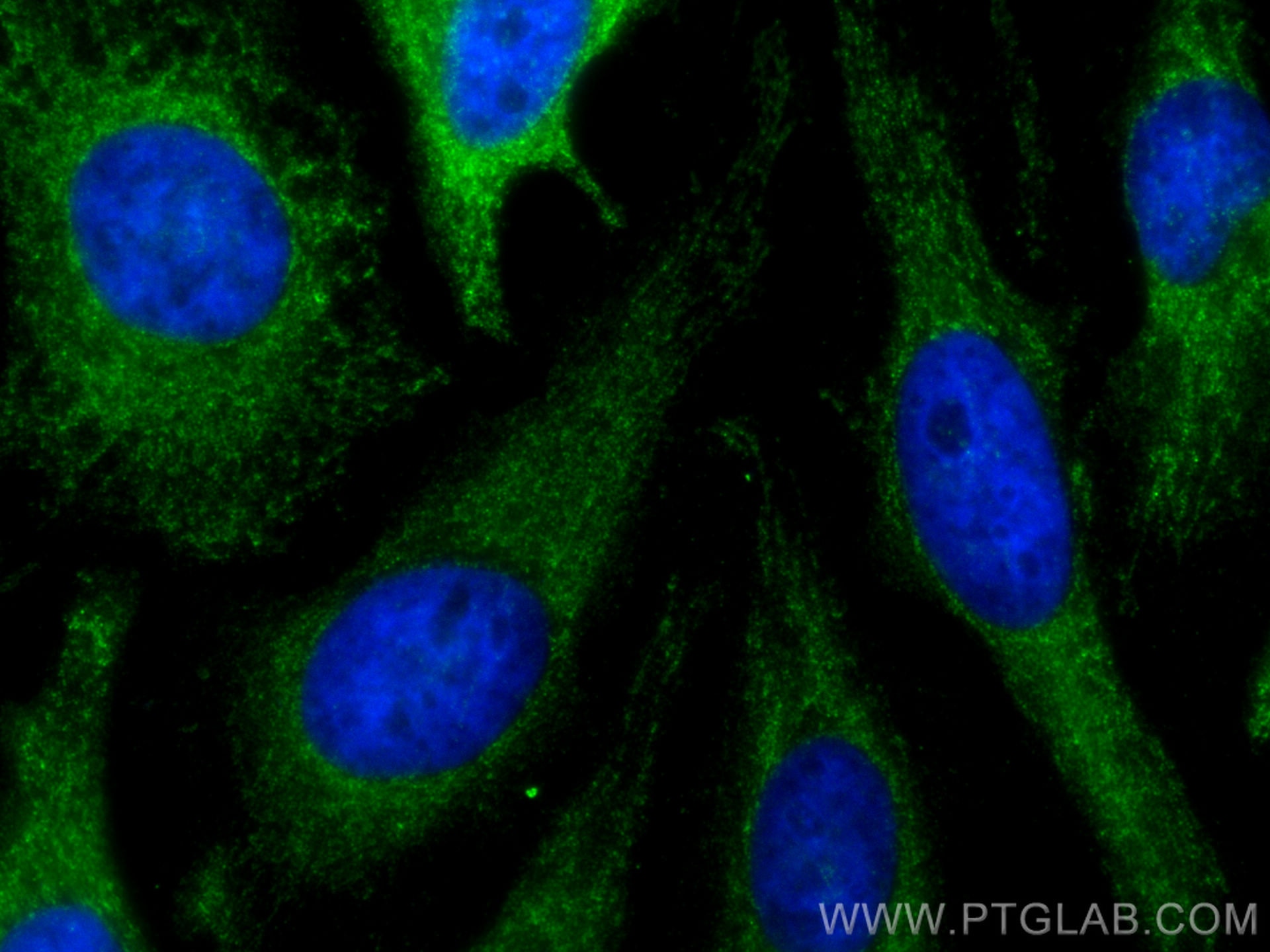Anticorps Polyclonal de lapin anti-Renin receptor, ATP6AP2
Renin receptor, ATP6AP2 Polyclonal Antibody for WB, IHC, IF/ICC, ELISA
Hôte / Isotype
Lapin / IgG
Réactivité testée
Humain, souris
Applications
WB, IHC, IF/ICC, ELISA
Conjugaison
Non conjugué
N° de cat : 10926-1-AP
Synonymes
Galerie de données de validation
Applications testées
| Résultats positifs en WB | tissu cérébral de souris, tissu cérébral de rat, tissu d'épithélium pigmentaire rétinien humain |
| Résultats positifs en IHC | tissu de cervelet de souris, tissu cardiaque humain, tissu placentaire humain il est suggéré de démasquer l'antigène avec un tampon de TE buffer pH 9.0; (*) À défaut, 'le démasquage de l'antigène peut être 'effectué avec un tampon citrate pH 6,0. |
| Résultats positifs en IF/ICC | cellules HeLa, |
Dilution recommandée
| Application | Dilution |
|---|---|
| Western Blot (WB) | WB : 1:500-1:2000 |
| Immunohistochimie (IHC) | IHC : 1:250-1:1000 |
| Immunofluorescence (IF)/ICC | IF/ICC : 1:200-1:800 |
| It is recommended that this reagent should be titrated in each testing system to obtain optimal results. | |
| Sample-dependent, check data in validation data gallery | |
Applications publiées
| WB | See 6 publications below |
| IHC | See 3 publications below |
Informations sur le produit
10926-1-AP cible Renin receptor, ATP6AP2 dans les applications de WB, IHC, IF/ICC, ELISA et montre une réactivité avec des échantillons Humain, souris
| Réactivité | Humain, souris |
| Réactivité citée | Humain, souris |
| Hôte / Isotype | Lapin / IgG |
| Clonalité | Polyclonal |
| Type | Anticorps |
| Immunogène | Renin receptor, ATP6AP2 Protéine recombinante Ag1360 |
| Nom complet | ATPase, H+ transporting, lysosomal accessory protein 2 |
| Masse moléculaire calculée | 39 kDa |
| Poids moléculaire observé | 28 kDa |
| Numéro d’acquisition GenBank | BC010395 |
| Symbole du gène | Renin receptor |
| Identification du gène (NCBI) | 10159 |
| Conjugaison | Non conjugué |
| Forme | Liquide |
| Méthode de purification | Purification par affinité contre l'antigène |
| Tampon de stockage | PBS with 0.02% sodium azide and 50% glycerol |
| Conditions de stockage | Stocker à -20°C. Stable pendant un an après l'expédition. L'aliquotage n'est pas nécessaire pour le stockage à -20oC Les 20ul contiennent 0,1% de BSA. |
Informations générales
ATP6AP2, also named as ATP6IP2, CAPER, ELDF10, N14F, ATP6M8-9, Renin receptor, and prorenin receptor, is believed to potentiate the renin-angiotensin system (RAS), conferring to prorenin, a likely pathological role at the tissue level. The PRR has been identified in the microvascular endothelial cells of the retina, which seems to be involved in pathological neovascularization processes. The present study demonstrates for the first time that the PRR is expressed in human ATP6AP2 and suggests a molecular mechanism by which hypertension may exacerbate the pathology of dry AMD. ATP6AP2 functions as a renin and prorenin cellular receptor. It may mediate renin-dependent cellular responses by activating ERK1 and ERK2. By increasing the catalytic efficiency of renin in AGT/angiotensinogen conversion to angiotensin I, it may also play a role in the renin-angiotensin system (RAS). Defects in ATP6AP2 are a cause of mental retardation X-linked with epilepsy (MRXE). The full length of ATP6AP2 protein is 39 kDa, and the band with an apparent molecular weight of 28 kDa is the soluble form.(PMID:19580809; PMID:28215051; PMID:34534267; PMID: 29127204)
Protocole
| Product Specific Protocols | |
|---|---|
| WB protocol for Renin receptor, ATP6AP2 antibody 10926-1-AP | Download protocol |
| IHC protocol for Renin receptor, ATP6AP2 antibody 10926-1-AP | Download protocol |
| IF protocol for Renin receptor, ATP6AP2 antibody 10926-1-AP | Download protocol |
| Standard Protocols | |
|---|---|
| Click here to view our Standard Protocols |
Publications
| Species | Application | Title |
|---|---|---|
J Clin Invest mTORC1 feedback to AKT modulates lysosomal biogenesis through MiT/TFE regulation. | ||
Exp Eye Res (Pro)renin receptor is expressed in human retinal pigment epithelium and participates in extracellular matrix remodeling. | ||
Int J Clin Exp Pathol MicroRNA-140-3p inhibits proliferation, migration and invasion of lung cancer cells by targeting ATP6AP2. | ||
Cell Biosci PABPN1 regulates mRNA alternative polyadenylation to inhibit bladder cancer progression | ||
Placenta Endothelin-1 production via placental (pro)renin receptor in a mouse model of preeclampsia | ||
ACS Nano Acidic Nanoparticles Restore Lysosomal Acidification and Rescue Metabolic Dysfunction in Pancreatic β-Cells under Lipotoxic Conditions |
